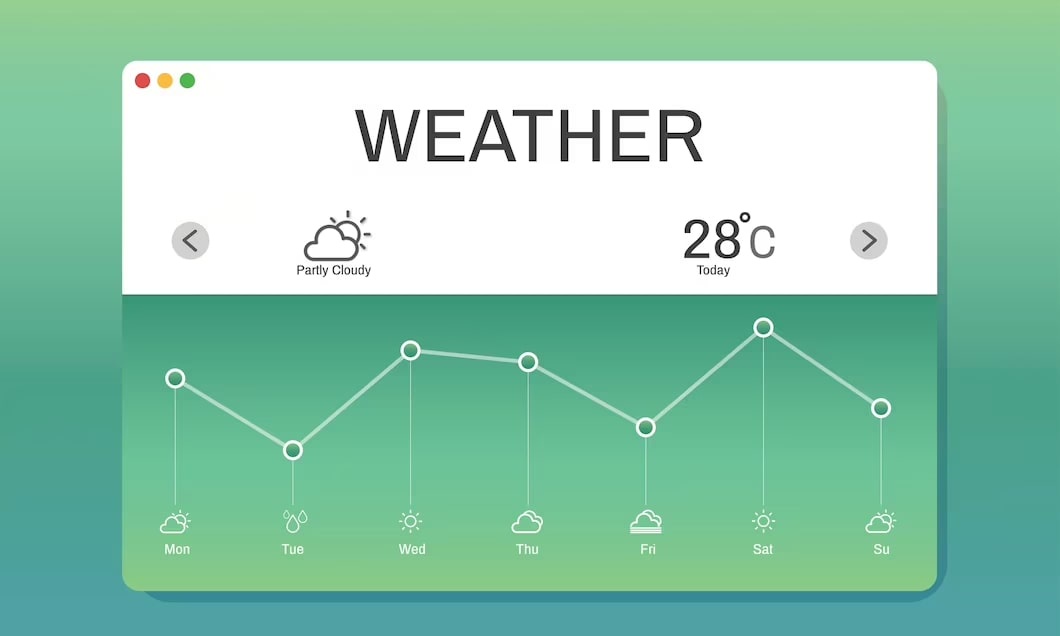Access to real-time weather data is crucial for various applications and industries. From weather forecasting to travel planning, agriculture, transportation, and beyond, accurate weather information is indispensable. Thanks to advancements in technology, developers now have access to a plethora of weather APIs (Application Programming Interfaces) that provide live weather data. In this article, we'll delve into the world of weather API, exploring the best options available for empowering applications with live weather API.
Understanding the Importance of Real-Time Weather Data
Weather impacts numerous aspects of our daily lives and businesses. Whether it's planning outdoor activities, optimizing supply chains, or predicting natural disasters, having access to up-to-date weather information is paramount. Real-time weather data enables developers to create applications that offer valuable insights and services to users across various domains.
What is Weather API?
Weather APIs are web services that allow developers to integrate weather data into their applications seamlessly. These API provide access to a wide range of weather information, including temperature, humidity, wind speed, precipitation, and more. By leveraging weather API, developers can incorporate dynamic weather forecasts and updates into their apps, enhancing user experience and functionality.
The Best Weather API in the Market
Weatherstack
- Weatherstack is a popular weather API that offers real-time weather data from around the globe.
- It provides accurate weather information, including current conditions, forecasts, and historical data.
- With extensive documentation and easy-to-use endpoints, Weatherstack is an excellent choice for developers seeking reliable weather data.
OpenWeatherMap
- OpenWeatherMap is a comprehensive weather API that provides current weather, forecasts, and historical data.
- It covers a wide range of weather parameters and offers various pricing plans to suit different project needs.
- OpenWeatherMap's API is widely used in applications ranging from mobile apps to IoT devices.
Weatherbit
- Weatherbit offers a suite of weather APIs, including current weather, forecasts, and historical data.
- It supports multiple data formats and provides access to weather data for any location worldwide.
- Weatherbit's API is known for its reliability and scalability, making it a top choice for developers building weather-dependent applications.
AccuWeather
- AccuWeather provides a range of weather APIs tailored for different industries and use cases.
- Its API deliver hyper-local weather forecasts, severe weather alerts, and historical data with high accuracy.
- AccuWeather's API solutions are trusted by businesses, government agencies, and developers worldwide.
WeatherAPI
- WeatherAPI offers a simple yet powerful weather API that delivers real-time weather data in JSON format.
- It provides current weather conditions, forecasts, and location-based weather information.
- WeatherAPI's free tier allows developers to access basic weather data without requiring an API key, making it accessible to all.
Integrating Weather Data into Applications
Integrating weather data into applications is relatively straightforward, thanks to the simplicity of weather API. Developers can choose the API that best fits their project requirements and sign up for an API key or access token. Once obtained, they can make API requests to retrieve weather data in JSON or XML format.
Here's a basic example of how to fetch current weather data using a weather API:
javascript code
// Example using JavaScript and the Fetch APIfetch('https://api.weatherstack.com/current?access_key=YOUR_API_KEY&query=New York').then(response => response.json()).then(data => {// Process weather data hereconsole.log(data);}).catch(error => {console.error('Error fetching weather data:', error);});
In this example, replace YOUR_API_KEY with your actual API key obtained from the weather service provider. The API endpoint (https://api.weatherstack.com/current) is where the request is sent, along with parameters such as the location (query=New York). The response is then processed and used within the application as needed.
Conclusion
In conclusion, integrating live weather data into applications is made possible by leveraging weather API. Developers have access to a variety of options, each offering unique features and data sets. Whether you're building a weather dashboard, mobile app, or IoT device, selecting the best weather API is crucial for delivering accurate and reliable weather information to users. By exploring the top weather API mentioned above, developers can empower their applications with real-time weather data, enhancing functionality and user experience.
Incorporating weather data into applications not only adds value but also opens up new possibilities for innovation across industries. With the right weather API at their disposal, developers can create weather-aware applications that cater to the diverse needs of users worldwide. So, why wait? Start exploring the best weather API today and unlock the potential of live weather data in your applications.
Frequently Asked Questions (FAQs)
1. How does a weather API work?
A weather API (Application Programming Interface) allows developers to access weather data programmatically. It works by sending requests to the API server, typically over the internet, and receiving responses containing weather information in a standardized format, such as JSON or XML. Developers integrate these APIs into their applications to fetch real-time weather data for various locations worldwide.
2. What kind of weather data can I retrieve using a weather API?
Weather API provides a wide range of weather data, including current conditions (such as temperature, humidity, wind speed, and precipitation), forecasts (hourly, daily, or extended), historical data, severe weather alerts, and more. Depending on the API provider and plan, developers can access different types and granularities of weather information to suit their application's requirements.
3. Are there free options available for accessing weather data via API?
Yes, many weather API providers offer free tiers or plans that allow developers to access basic weather data without any cost. These free options often come with limitations such as usage quotas, restricted features, or lower update frequencies. However, they still provide valuable weather information for developers to experiment with and integrate into their applications.


No comments yet